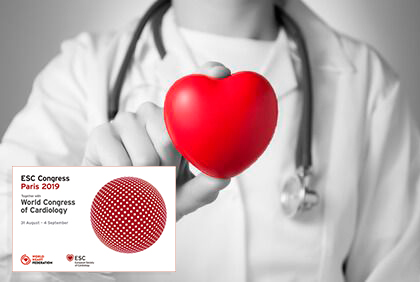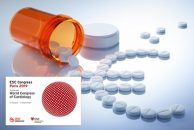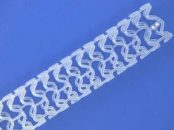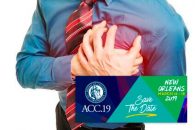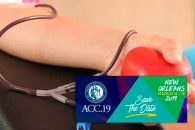Remote ischemic conditioning does not offer any clinical benefit to patients with ST-segment elevation acute myocardial infarction undergoing primary angioplasty, according to this study presented on Sunday at the European Society of Cardiology Congress 2019. Prior studies were limited and small, but this analysis seems to provide definitive evidence with regard to ischemic pre-conditioning. The…
ESC 2019 | ISAR-REACT 5 | Which Is Better in ACS, Prasugrel or Ticagrelor?
Courtesy of Dr. Carlos Fava. The benefit of dual antiplatelet therapy in acute coronary syndromes (ACS) has been proven long ago, and both prasugrel and ticagrelor have offered best results than clopidogrel. However, nowadays, it is unclear which of them is superior in the long term, taking into account the fact that one starts to…
Must Post MI Patients Use B Blockers for Life?
Long-term use of B blockers after myocardial infarction has been questioned for a while now; in fact, admittedly, beyond the three year follow up its benefits remain unclear. It is particularly controversial in elderly patients and this recent study published in Circ Cardiovasc Qual Outcomes sheds some light on the matter. The study followed 6893…
DES with Bioresorbable Polymer vs. Bare Metal Stents in Primary PCI
Long after myocardial revascularization guidelines had established no medical reason justifies the use of bare metal stents (BMS), along comes this study to refresh the old trials comparing drug eluting vs bare metal stents in the context of primary PCI. The problem for many countries is that primary PCI obviously occurs in the context of…
After Much Toing and Froing, Gastrointestinal Protection Is Back to the Forefront
Several clinical guidelines differ in their recommendation regarding the prescription of proton pump inhibitors to patients being treated with dual antiplatelet therapy after infarction. In 2015, the European Society of Cardiology (ESC) recommended their use in patients with high bleeding risk; however, in the 2017 update that recommendation became general after the assumption that, for…
EuroPCR 2019 | REVELATION: Drug Coated Balloons in ST Elevation MI
Drug coated balloons in the context of ST elevation acute myocardial infarction seem safe and feasible under certain circumstances. This single center study is the kickoff to keep studying the possibility of “leaving nothing behind” after primary PCI. This small randomized study revives drug coated balloons to be used particularly instead of stents in young…
Staged Complete Revascularization vs. Culprit Vessel PCI at Long-Term
Staged complete revascularization in patients with acute myocardial infarction and multivessel coronary disease is superior to culprit PCI only at five-year follow-up. The outcomes of this retrospective analysis show the benefit of staged PCI, though it might be attenuated in diabetic patients. Outcomes are consistent with previously published randomized studies. Nevertheless, we should remain cautious…
ACC 2019 | Having an Infarction at Very Young Age or 10 Years Later Does Not Change Long-Term Mortality
Patients who suffered their first coronary event before turning 40 years old have similar long-term mortality to those who experienced it even 10 years later, according to the YOUNG-MI Registry presented at the American College of Cardiology [ACC] 2019 Scientific Sessions. Secondary prevention must be used aggressively in both young and elder patients. Over more than…
ACC 2019 | SAFARI: Unexpectedly, Radial Approach Offers No Benefits In STEMI
This study was not able to show benefits in terms of mortality or bleeding when using radial vs. femoral approach in patients undergoing ST elevation myocardial Infarction. This small trial does not change things for “radialists” way past their learning curve who already feel confident with this technique. For them, there is no way back.…
Optimal Revascularization Time in Transient STEMI
Patients admitted with transient ST elevation MI and later normalize completely (symptimos disappear before being treated) are those we normally say are “undergoing a non-ST elevation MI”. This is complex, because revascularization time remains nuclear, as is whether to treat them as STEMI or non-STEMI patients. The aim of this study was to determine the…
